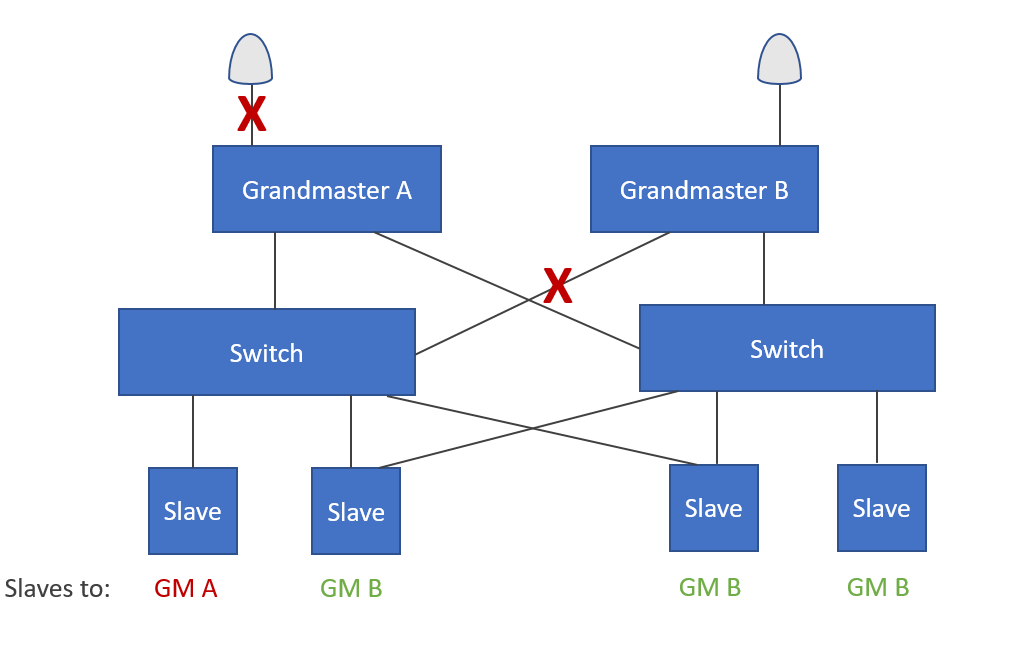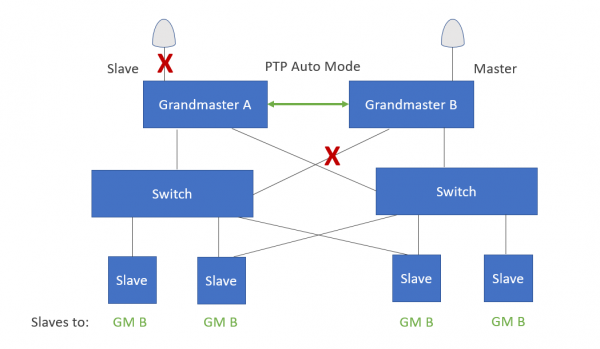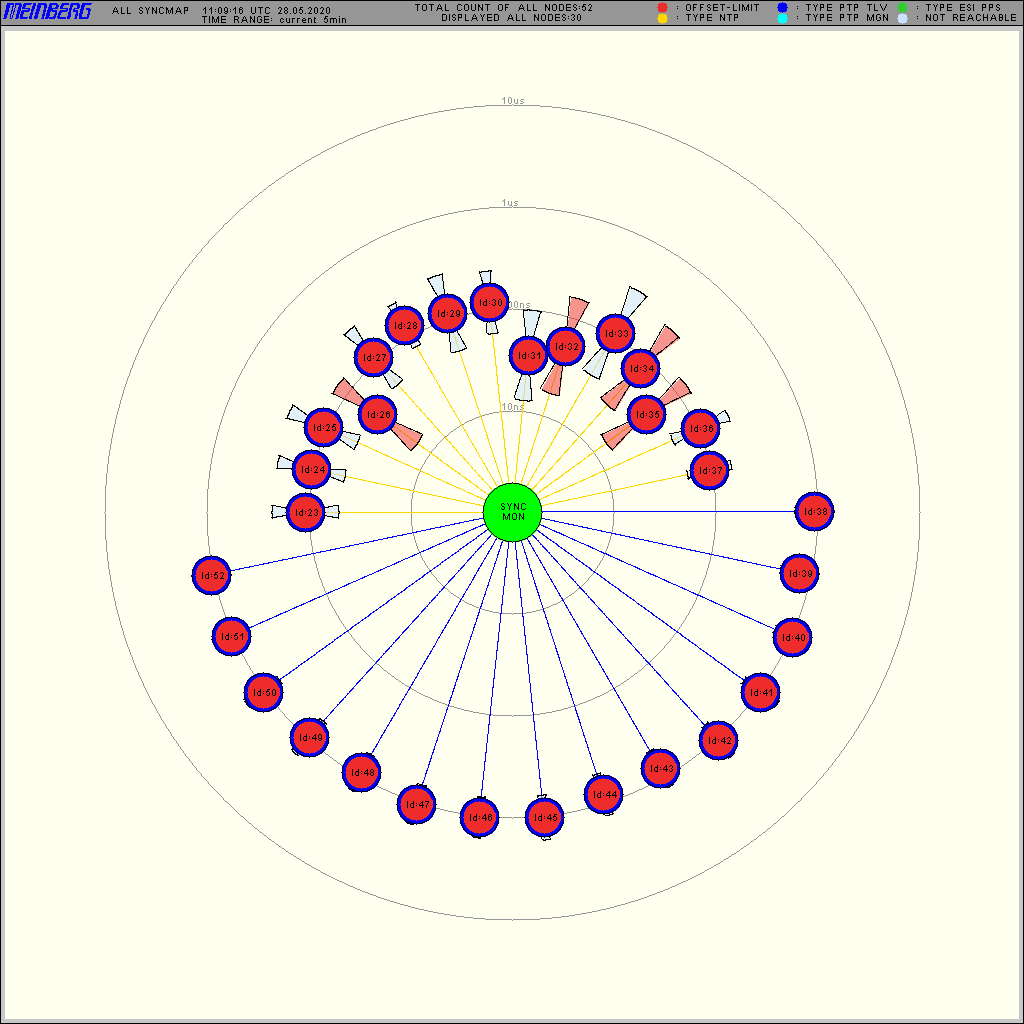Five Minute Facts About Packet Timing
In this post I would like to introduce a method which can be deployed in versatile PTP networks, professional media, power or any other timing network. Basically, it is a method which uses a combination of PTP and the Meinberg MRS (Multi-Reference-Source) feature which build together an elegant backup concept useful for many implementations.
Sometimes we call it “Safe Sync Redundancy (SSR)” and sometimes simply “PTP Auto Mode”.
What is it about?
Redundant networks
Let’s consider a redundant network with two master clocks, each with their own GNSS. They are both connected to isolated networks and cross linked to two switches. Some slaves can receive the timing from both networks. So, if one master clock or switch goes down, slaves connected to both networks would still be able to receive the timing.
Now, what will happen in such a network if a GNSS failure and a network error occur at the same time? One or both master clocks would be free running. Due to the network failure, the master clocks would not see each other, and they would both start sending timing packets into the network. Therefore, some slaves would get the timing from the grandmaster A and others from the grandmaster B.

This situation can lead to synchronization islands, where a couple of slaves are drifting in one direction and others following the second master into the other. In case that one of the two grandmasters is free running the two groups will drift apart over time.
The synchronization island problem can be solved if we cross connect the master clocks with a so-called PTP Auto mode (see Figure 3). Here, grandmasters would be able to see each other and the Best master clock algorithm (BMCA) would be able to identify the better one. The better one would become a grandmaster and would serve as a fallback reference for the other master clock. As the name “PTP Auto mode” tells you, a given PTP port can operate either as a master or a slave. In our case the better clock switches automatically to a master and the inferior into a slave role.
We can use the BMCA well for this because with clock accuracy and clock variance even if both devices are in free run, one usually has less drift in holdover or one has a better oscillator. If everything is the same, the clock ID is eventually a tie breaker.
As a result all slaves would be getting timing from one grandmaster.

PTP Auto Mode against GNSS vulnerabilities
Another use case for the PTP Auto Mode method is as a counter measure against jamming or spoofing. In our last blog post on GNSS jamming / spoofing we addressed different strategies how to protect your timing against either accidental or unfriendly events. One strategy is to use multiple clocks and multiple reference signals since the source diversity can help.
Let’s say you have two grandmaster clocks. It is recommended that the two GNSS antennas are installed as far as possible from each other (see Figure 4). The longer distance would help if jamming is going on at one of the two locations.

You can connect the two grandmasters via PTP directly point to point, for example by using a long 10 km single mode fibre cable. The grandmaster that is affected by a GNSS attack would lose the GNSS. However, due to the PTP Auto Mode this grandmaster would automatically switch to a slave mode and would continue receiving accurate time from the other grandmaster 10 km away.
A similar setup can detect a spoofing attack via PTP measurement against the remote receiver. In case of spoofing the attacker would have to attack both sides at the same time with very high accuracy to make sure that both grandmasters are compromised to a new time. If the attacker is able to spoof only one of them this can be detected by measuring PTP quality between both clocks, for example with Sync Monitor, where you would measure the affected difference. You wouldn’t know which of the two is actually attacked, but at least you would be alarmed that something is going on and you can investigate the incident further.
If you have more questions about the PTP Auto Mode don’t hesitate to send me an email at andreja.jarc@meinberg.de or visit our website at www.meinbergglobal.com.
Thank you for your interest in our blog. Wish you all to stay compassionate and strong in this challenging time.

If you enjoyed this post, or have any questions left, feel free to leave a comment or question below.